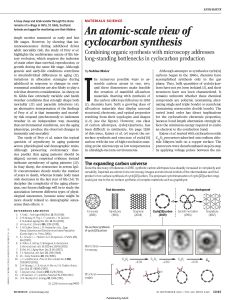Join getAbstract to access the summary!

Join getAbstract to access the summary!
Sabine Maier
An Atomic-Scale View of Cyclocarbon Synthesis
Combining organic synthesis with microscopy addresses long-standing bottlenecks in cyclocarbon production.
Science, 2019
What's inside?
Scientists are adding microscopy to the organic chemist’s toolbox, introducing a world of possibilities.
Recommendation
If you think microscopy is not useful to organic chemists, think again! A physics research group led by Professor Sabine Maier demonstrates how microscopy can be used to make and study fascinating carbon-based materials. The fact that there are different ways to combine carbon atoms means that it’s possible to create a variety of materials with unusual properties entirely from carbon. Anyone interested in the field of materials science will find this article intriguing and inspiring.
Summary
About the Author
Sabine Maier is a professor of physics at the University of Erlangen-Nürnberg, where she leads a research team that focuses on using scanning probe microscopy to study materials at the molecular level.

















Comment on this summary